Abstract
Based on data from 1990 for summer watermelon, one of the fruit vegetables in Japanese agriculture, the maximum national harvest was 742kt, the maximum cultivated area was 22.1kha, and the maximum shipping volume was 111kt in Kumamoto. These figures suggest that summer watermelon is an important crop nationwide, with Kumamoto in particular being the center of its production. In addition, the relationship between yield and cultivated area suggests that the yield per cultivated area is relatively high. This trend may be due to high production efficiency and improved technological standards for summer watermelon. Furthermore, since the shipping volume is somewhat lower than the harvest volume, it is possible that some of the harvested watermelons are being used for other purposes, such as processing. Overall, it is clear that summer watermelon is an important fruit vegetable in Japanese agriculture, with Kumamoto in particular standing out as its center.
Summer watermelon harvest yield (main data).
Looking at data on Japan’s summer watermelon harvest from 1973 to 1990, it can be noted that a record harvest of 1.21 Mt was achieved nationwide in 1973. Since then, yields have fallen to 61.6% of their peak. This trend is likely due to several factors in summer watermelon production. While agricultural mechanization and technological innovations may have improved efficiency and increased yields, the effects of urbanization, loss of farmland and climate change are also taken into account. Changes in demand and market conditions may also be affecting yields. Overall, summer watermelon yields have been declining since their peak in 1973, but this is likely due to a complex interplay of multiple factors.
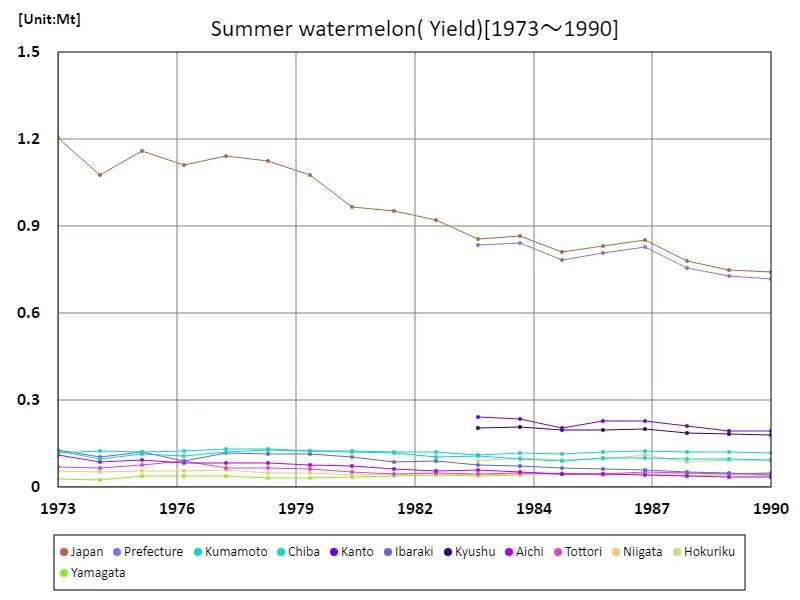

The maximum is 1.21Mt[1973] of Japan, and the current value is about 61.6%
Summer watermelon harvest volume (by prefecture).
Looking at the data on fruit vegetable harvests by prefecture in 1990, Kumamoto achieved the highest overall record of 119kt, the highest at that time. This data suggests that Kumamoto is a standout producer of fruit vegetables. It also appears that Kumamoto’s agricultural environment and technological level are likely to be higher than those of other prefectures. These characteristics are thought to be influenced by multiple factors, including local climatic conditions and suitability of land use. Additionally, Kumamoto’s harvest yields stand out compared to those of other prefectures, suggesting that there are differences in agricultural characteristics and productivity from region to region. Furthermore, Kumamoto’s leadership in fruit vegetable production suggests that agricultural policies and support measures in the region may be effective. Overall, the 1990 data reveals that Kumamoto has an advantage in fruit vegetable production.
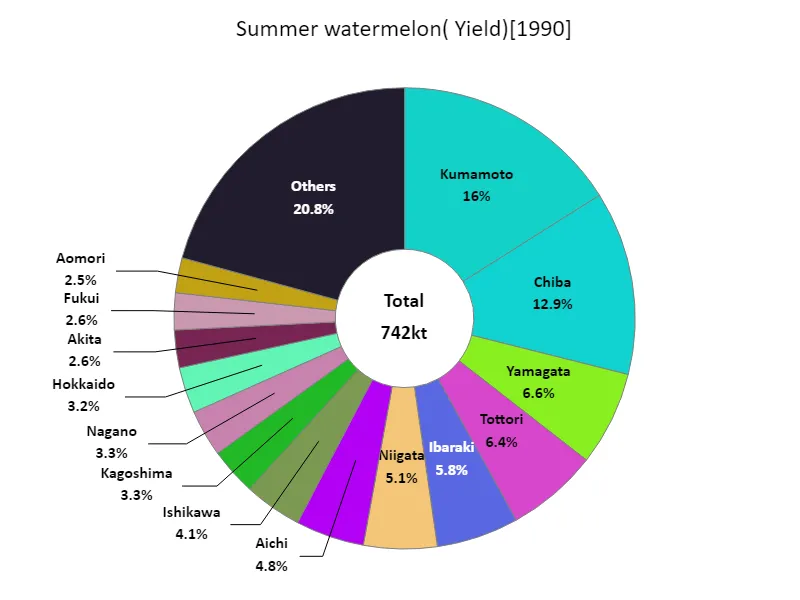

The maximum is 119kt of Kumamoto, the average is 15.8kt, and the total is 742kt
Area planted with summer watermelon (main data).
Analysis of data on the area of land planted with summer watermelon in Japan from 1973 to 1990 reveals that in 1973, the largest area ever recorded nationwide was 38.7 kha. Since then, the area under cultivation has decreased to 57.1% compared to its peak. This trend is likely due to several factors in summer watermelon cultivation. For example, agricultural mechanization and technological advances have increased yields per cultivated area and made production more efficient. It is also possible that the decline in summer watermelon cultivation is due to urbanization and conversion of farmland, as well as economic decisions by farmers. Additionally, climate change and weather instability may have also influenced the fluctuations in crop area. Overall, the area planted to summer watermelon has been on a downward trend since its peak in 1973, but this is due to a combination of factors that reflect environmental and economic changes in summer watermelon cultivation.
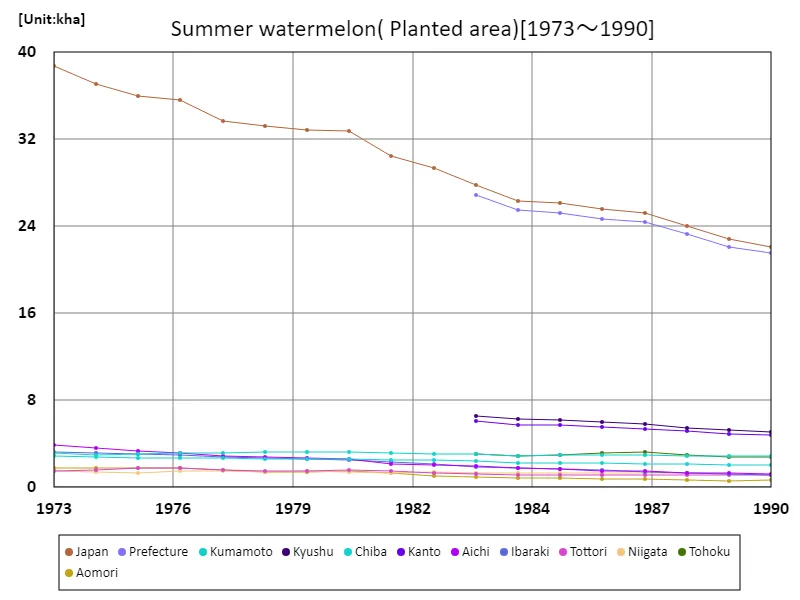

The maximum is 38.7kha[1973] of Japan, and the current value is about 57.1%
Area cultivated with summer watermelon (by prefecture).
Looking at the data on the cultivated area of fruit vegetables by prefecture in 1990, Kumamoto achieved the highest overall record of 2.87 kha, the highest at that time. This data suggests that Kumamoto is a particularly noteworthy region for the cultivation of fruit vegetables. It also appears that Kumamoto’s agricultural environment and technological level are likely to be higher than those of other prefectures. These characteristics are thought to be influenced by multiple factors, including local climatic conditions and suitability of land use. Furthermore, Kumamoto’s cultivated area stands out compared to other prefectures, suggesting that there are differences in agricultural characteristics and productivity from region to region. Furthermore, Kumamoto’s leadership in fruit vegetable cultivation suggests that agricultural policies and support measures in the region may be effective. Overall, the 1990 data reveals that Kumamoto has an advantage in terms of the area planted to fruit vegetables.
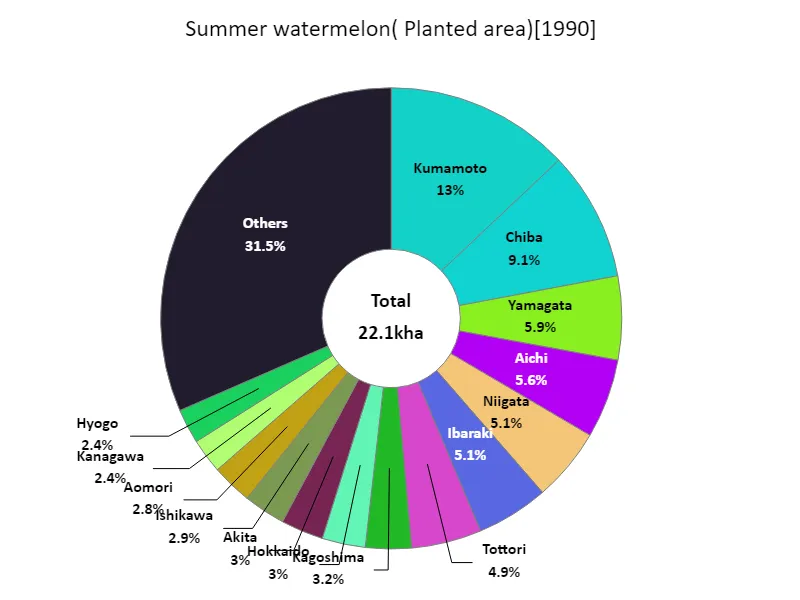

The maximum is 2.87kha of Kumamoto, the average is 471ha, and the total is 22.1kha
Summer watermelon shipment volume.
Looking at the summer watermelon shipping data for 1990, the largest overall was Kumamoto at 111kt, the average was 13.4kt, and the total was 629kt. These figures suggest that summer watermelon shipments are relatively large, with Kumamoto being particularly prominent among them. Kumamoto is the largest overall, indicating that the region is a major producer of summer watermelons. In addition, since the average shipping volume was 13.4kt, it can be seen that the production volume of summer watermelons throughout Japan is generally maintaining a constant level. This suggests that summer watermelon is a fruit that is widely in demand and is cultivated steadily to provide farmers with a steady income. Furthermore, the total of 629kt indicates that demand for summer watermelon within Japan is quite high. This reflects the fact that summer watermelon is a typical summer fruit and is popular with many people. Overall, the 1990 data reveals that summer watermelon shipments were relatively large, with Kumamoto being the center of production.
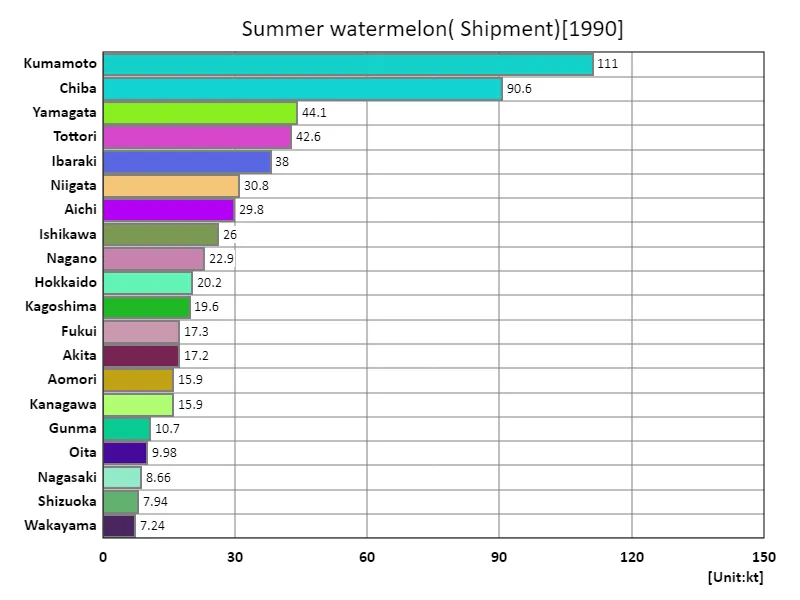

The maximum is 111kt of Kumamoto, the average is 13.4kt, and the total is 629kt
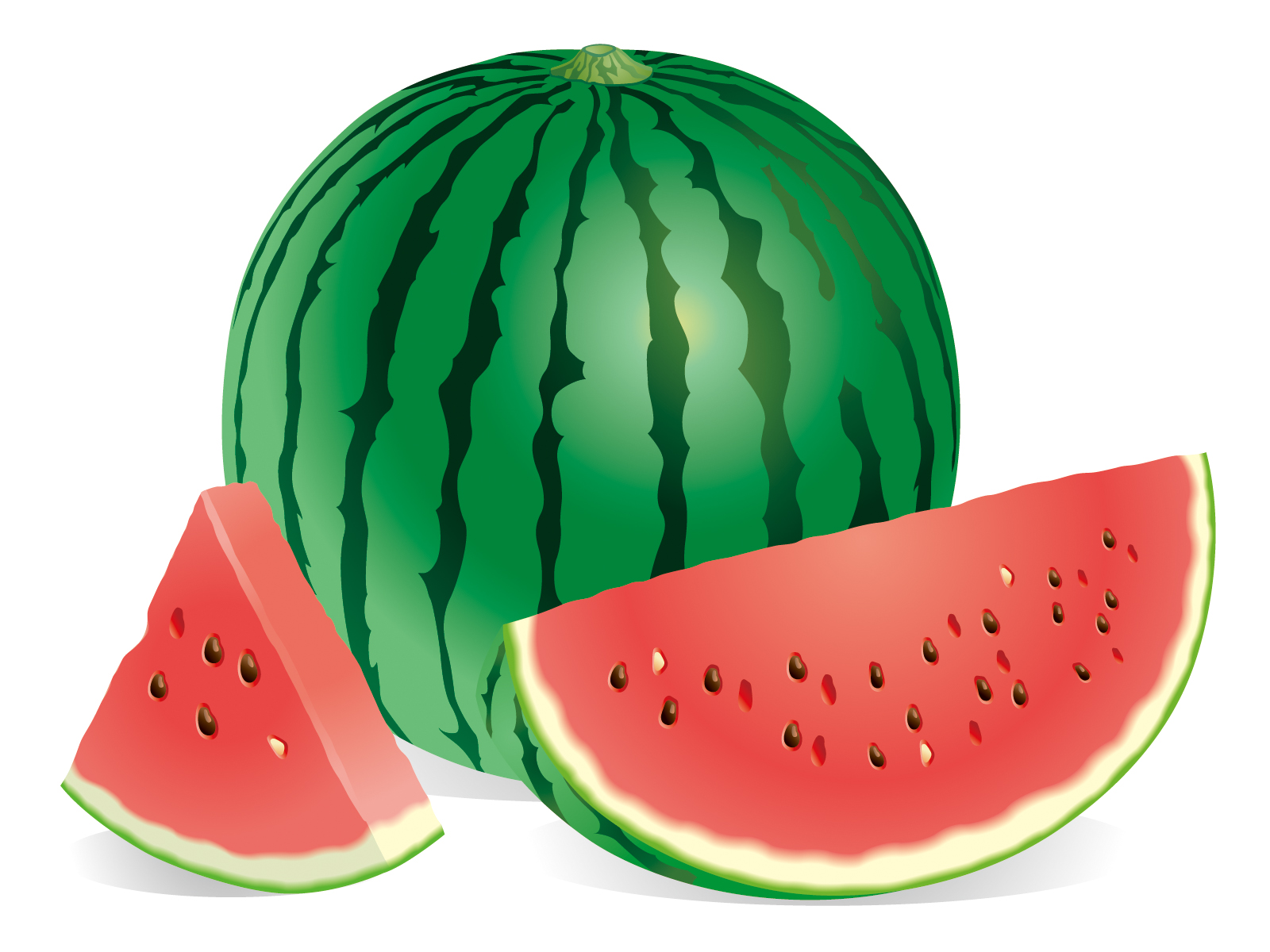


Comments